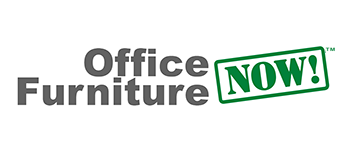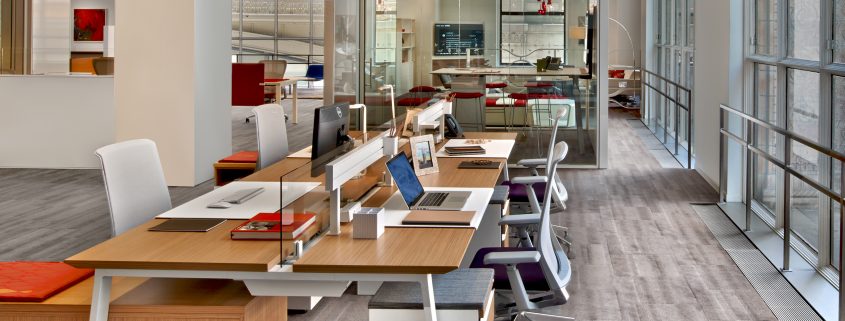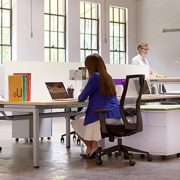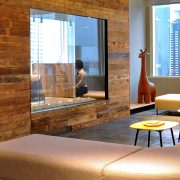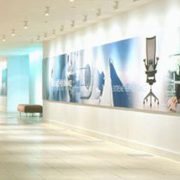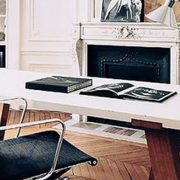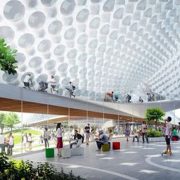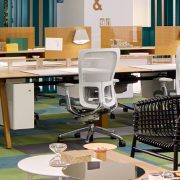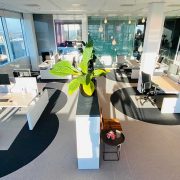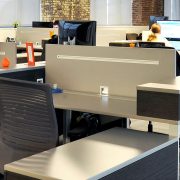Improving Office Dynamics By Design
Achieving and maintaining a competitive edge with your business could be relative to the opportunities that are created through improved workplace dynamics. Designing a workplace that is productive by design is a challenge most often overlooked by business owners, but it is a service designers readily provide. Harnessing the potential of workplace design as it relates to business strategy and the bottom line is a trend that is gaining ground for the future of collaborative office design. A fashionable design that fails to serve your brand and your company mission can hinder talent acquisition, information sharing, communication, and progress.
When deciding how to create a workplace of the future, there are many levels of thought to consider. Thinking ahead of your current needs, maintaining an agile footprint that grows with you, and utilizing all of the perks well-planned design can provide is the best strategy. These are some things to consider:
Think Beyond Current Design Trends
The trendy fashion colors; the faceless placating neutrals and ultra modern marble reception areas; and even the open beams and polished concrete of trendy industrial design are all giving way to a more sophisticated approach to office design. Aesthetically pleasing workplace design is a given. Delving into a deeper understanding of the DNA of an organization and the effects of its design on productivity is the new design acumen. Capturing the infrastructure of communication, business strategy, core values, and workstyles that embody the workplace culture of today has become a valid collaborator in the design process. Designers and space planners are being asked to create environments that work. The inclusion of stakeholders and change management is critical to a successful office design strategy. But it’s no longer sufficient to limit design decisions to senior staff. Involving all levels of staff from supervisors, to mid-level, to administration creates an inclusive culture that recognizes the importance of what each role contributes to the company over all. An opportunity for every employee to be involved in the envisioning and ownership of the process results in both the strategy and the outcome being owned, appreciated and utilized as intended.
Evidence Based Design
Air quality, natural light, thermal comfort, acoustics and ergonomics all have the ability to enhance productivity, increase employee satisfaction and reduce absenteeism. A good design strategy should include the ability for employees to seek out quiet places to manage more complex thinking. It should also take int0 account consistent climate control for staff to dress comfortably, regardless of the season. No longer beholden to just space planning and color selection, design must now account for any mismanagement of the workplace environment, which can lead to a variance in employee performance by as much as 30%. As improvements in science and technology become more readily available, designers have tools at their disposal to directly measure the impact of these elements, how they affect performance and the success or failure of environmental change. No longer simply creating through intuition and best practice, designers and architects are being asked to embrace the disciplines of Evidenced Based Design, a field of study closely related to performance-based building design practices. This provides more thorough environmental research, data capture, and strategic initiatives to empower workstyle and behavioral changes. Having access to pertinent data to determine if the current workplace setup is the optimal use of space or if a new style or configuration would be more appropriate is a very important aspect of this approach. With the ability to review employee movements, which is especially critical for remote workers or those requesting flexible working schedules, designers will have numerical evidence as to why moving toward an agile organizational philosophy, such as desk sharing or Activity Based Working, would be more advantageous for your business.
Share-Based Economy = Share-Based Workplace
The growing share economy and a subtle shift in social attitudes from ‘ownership to access’ is already beginning to impact the global perspective of the workplace. Co-working spaces have been popping up all over the globe and their success is on the rise. Largely used by entrepreneurs, start-up companies, and freelancers, their attributes may seem to be irrelevant to businesses which remain in more traditional working environments. But coworking spaces have had great success in creating the open environments and unique user experiences that foster collaboration and outside the box thinking. Gone are departmental barriers. Understated flexible designs, a mixture of spaces and a relaxed culture encourage social interactions, connections and the sharing of ideas. With agility and collaboration being key to the success of businesses today, more large companies are adopting the open plan design elements of co-working spaces. Some corporations with excess space are taking this one step further by inviting complimentary or smaller business to utilize the free space in their office, creating a mini co-working space to stimulate fresh thinking, and as a bonus managing the cost of excess floor space. It could also be said that the Activity Based Working (ABW) philosophy is a caveat of the share based economy. Gen-Y, who grew up sharing files and music, have launched themselves into the corporate world. Coming from a university environment that encouraged movement and flexibility of spaces, Gen-Y are inspiring organizations to develop more agile workstyles. Within a fully ABW workplace, there is neither “desk ownership” nor underutilization of resources and the design would be focusing more on work environments, rather than workstations.
Flexibility for Business Agility
Not only are Gen-Y inspiring flexibility in terms of desk ownership, but they are demanding flexibility in terms of how, where and what their workspace looks like. Mobile technology allows employees to work from home, on the train or in a café. Yet the office remains the place where people come together to collaborate, socialize and connect. Comfortable with the freedom flexible working provides, there is a growing demand for space adaptability in terms of the type of work settings available to employees. Instead of following a more traditional office design, including an open plan office, meeting rooms and a breakout area for meals, designers are working with organizations to develop a range of spaces that suit the day to day needs of employees. Moving fluidly between a variety of areas and readily seeking out spaces that will compliment the task at hand is essential to agile work. Increased space flexibility is not only crucial to employee satisfaction and productivity but to organizational strategy and agility. Office design should no longer focus on one final outcome, but on managing the possibility of several different outcomes simultaneously.
Design That Supports Brand & Culture
Branding has the power to create a consistent look, attract and retain loyal customers and generate particular feelings and emotions towards your brand message. Much evidence exists for positive outcomes when directed at external customers, but less emphasis has been spent directing similar efforts internally towards employees by fostering workplace culture and brand loyalty. As organizations seek to gain a competitive edge in attracting and retaining talent, workplace branding will take on a new level of importance. Design messaging can solidify your vision to not only your customers but to your team. Evolving from simply using your brand colors and including vibrant generic elements, to developing a more purposeful design aesthetic that incorporates your core value messaging can bring your vision and mission home within the environment. By creating a satisfying work environment for staff to connect, perform and be empowered by immersion in your core values, they become more deeply connected to your success. We’re all craving the more “human experience” and an organization that can provide this and successfully generates positive feelings via internal branding will be more likely to retain staff, lift engagement levels and achieve strategic goals.
Making the most out of your office design is the goal of any space planning endeavor. Designers, architects, and space planners have access to data and information that can help you develop the best strategy possible for the success of your office design. Knowledge is power and the business market is evolving constantly. Evolving your design strategy can provide some foundation ethos to keep your business on the cutting edge.
 MEET JANICE COONS: Janice assists clients seeking furniture for offices, healthcare, and higher education. Armed with her extensive knowledge of industry trends, she can help you achieve the competitive design edge you deserve for your office! Connect with her via email janice@officefurniturenow.com or by calling 888-910-3769 x113.
MEET JANICE COONS: Janice assists clients seeking furniture for offices, healthcare, and higher education. Armed with her extensive knowledge of industry trends, she can help you achieve the competitive design edge you deserve for your office! Connect with her via email janice@officefurniturenow.com or by calling 888-910-3769 x113.
